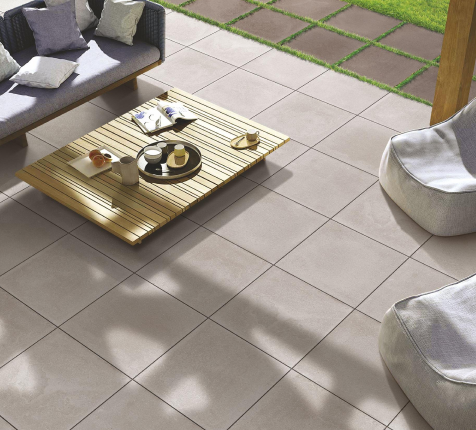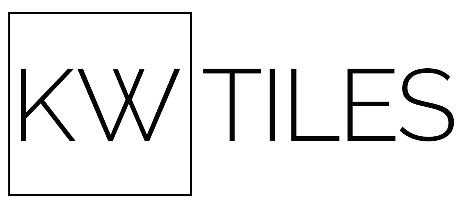Visit us in store to meet one of our experts. Free Design Consultation!
Terminology
Product Terminology
Whether you're a seasoned professional or a DIY enthusiast, understanding the terminology associated with tiles is essential for making informed decisions and achieving the desired results in your design endeavors.
We'll provide insights into valuation terminology, ensuring that you're equipped to assess the quality and value of tiles based on industry standards and grading systems. So whether you're planning a bathroom renovation, kitchen backsplash upgrade, or outdoor patio makeover, our tiles terminology page is your go-to resource for mastering the language of tiles and achieving stunning results in your projects.

Tile Materials
Ceramic Tiles
Ceramic tiles are made of clay which are moulded into the desired shape and then baked in a kiln at extremely high temperatures. After this process they are naturally durable and extremely strong making them ideal for the family home.
Ceramic tiles come in many different shapes and sizes, are easy to install and are quite affordable compared to the tile types.
Another reason ceramic tiles are so popular is that they come in glazed and unglazed varieties, both having their distinct advantages (keep scrolling to find out). A colourful glazed ceramic tile can be used to create stunning statement pieces in a room, such as a stunning kitchen splashback.
Porcelain Tiles
Porcelain tiles are constructed from clay and sand then shaped and blasted in the kiln at higher temperatures than ceramic tiles. As a result they achieve a higher PEI Rating meaning they are harder, denser and more suitable to be used as floor tiles.
In addition to their strength, porcelain tiles are extremely popular amongst renovators and architects because they can emulate the appearance of natural materials, such as concrete, natural stone or wood look, giving the decorator the ability to achieve stunning results while still retaining the distinct advantages of tiles.
Glazed Tiles
A glazed tile is when a standard tile, like a ceramic or porcelain tile, has a fine, glass-like layer applied to the tile material creating an excellent waterproofing quality as the glaze bonds to the surface creating a strong outer shell and attractive sheen quality.
It’s this glaze which adds colour or patterns to the tile which is ideal for kitchens and wet areas as they are attractive, smooth, stain-resistant and easy to clean.
Unglazed Tiles
Unglazed tiles are standard tiles that are ready to use upon coming out of the kiln without the need of further processing - which may include glazing or having prints applied to them.
While glazed tiles feature a glossy finish to keep out moisture, unglazed tiles are very dense giving them similar properties with the added visual benefits of natural finishes - A popular unglazed tile is the recognisable terracotta tile.
Unglazed tiles typically have rougher surfaces to achieve higher slip test ratings making them ideal for outdoor use though they may require some sealant.
Mosaic Tiles
Mosaics are small pieces of tiles assorted in linear or interchanging patterns which can be used to inject eye-catching elements into an otherwise plain wall, or, to create stunning features in your house, kitchen splashback or bathroom.
Mosaic tiles generally come in all sorts of tile materials including ceramic, porcelain, glazed and unglazed varieties.
Volare Tiles + Flooring supplied mosaic tiles in mesh sheets which can be laid easier and quicker than a single piece at a time.
Polished Porcelain
As mentioned above, unglazed porcelain tiles are ready to be used out of the kiln with no further processing - but they can be polished!
Polished porcelain tiles have a top surface polish to create a reflective and highly glossy appearance which are typically suited for indoor floors and walls though generally not recommended for wet areas, such as bathrooms or laundries.
A benefit of polished porcelain tiles are they look great, easy to clean and look super slick when used on the floor.
Tile Finishes
Gloss
Ideal for walls, floors and splashback features, gloss finished tiles showcase a shiny surface ideal for brightening up spaces. They are easy to clean and highly water and stain resistant making them great for inside. It is not recommended using a gloss tile for outdoor flooring.
Matt
Matt finishes absorb light rather than reflect it, so unlike the gloss finish, your matt tiles will not have a sheen quality thus creating a rustic and traditional look. Matt finished tiles are very popular throughout the house, living areas, hallways and entryways as they have a high slip rating.
Grit
Grit finished tiles feature a significant slip resistance as they are highly granular, like sandpaper, making them the ideal choice for outdoor areas.
Lappato
A lappato finish fits nicely between a matt and polished tile as they are polished for a shorter time which gives them in a softer finish. Lappato tiles can often be referred to as semi-polished. Instead of the full reflection a polished tile provides, the lappato will deliver an enjoyable reflection.
Surface
The surface finish on your tile. It is important to consider the surface finish and the intended purpose of the material within its application.
Primary finishes in manufactured tile: matt, natural (another reference for matt), lappato (semi-polished or highly polished in some cases), polished, gloss, lustre, slip resistant, satin, silk, and honed.
Primary finishes in natural stone tile: unfilled-honed, filled-honed, brushed, bush-hammered, saw-cut, sandblasted, tumbled, honed, and polished.
Edge
Whether the tile has a rectified or non rectified edge.
Rectified Edge
It is standard practice for tile factories to cut down tiles from a larger format to make multiple formats. For example, the factory could produce a tile that is 603mm in width and then rectify the tile to a 596x596mm or they could cut (or grind) the tile to 596x297mm. The tile is cut with a straight edge and then a micro chamfer (aris) is created on the edge to strengthen the tile from cracking if impacted. A rectified tile has a clean contemporary feel and enables you to have a smaller grout gap. Rectifying machines are calibrated between every batch, ensuring a consistent size within a batch (still with an allowed tolerance). When looking specifically at Porcelain as a material, rectified porcelain tiles are now the most commonly produced tiles for commercial floor and wall applications.
Non Rectified Edge
This is when the tile manufacturer uses a mould to press the shape/format of a finished tile. All pressed tiles begin their life-cycle with a pressed edge. Thereafter they may be sent to be rectified.
Hand Formed tiles (handmade)
This is when the tile manufacturer shapes the shape/format of a finished tile by hand. Generally hand formed tiles are not rectified. The inherent imperfection and unique quality of each piece are seen to be a feature of these types of materials
Variation
The variation levels present in a batch of tiles.
V0 - Very Uniform
All tiles have an identical design and colour/tone.
V1 - Uniform
There is a very slight variation in the colour and tone between individual tiles.
V2 - Slight variation
There is a slight variation in the design and/or colour and tone between individual tiles.
V3 - Moderate variation
There is a moderate variation in the design and/or colour and tone between individual tiles.
V4 - High or Random
There is significant variation in design and/or colour and tone between individual tiles. This is most common in natural stone, terracotta and ceramic designs replicating natural materials.
Applications
Suitable applications for the selected tiles are to be considered.
Some tile types are better suited to internal environments.
External applications which are exposed to the elements may need to be more robust. Wet areas and submerged applications will require specific attention. There are certain types of materials which may require fire ratings in certain applications. Slip resistance of pedestrian surfaces is a very important consideration in the the Australian context which will dictate certain types of materials
Interior walls
All internal wall applications (both ceramic and porcelain bisque suitable)
Interior floors
All internal flooring whether bonded (adhered to the floor substrate by means of tile adhesive) or raised access flooring (RAF), where a minimum 2cm thickness is required.
Shower walls
All internal shower wall areas/steam rooms/saunas which will become wet.
Shower floors
All internal shower floor areas/wet rooms where the tiled surface will become significantly wet.
Splashbacks
Wall installations where a basin/sink is present which may cause wetting of the wall.
Exterior walls
All external wall cladding installations (usually porcelain bisque if completely exposed).
Pool interiors
Submerged installation on interior of pool/pond.
Underfloor heating
Those installations where underfloor heating is installed (electric or hydronic ((heated water)).
Pendulum Test
| Pendulum Classification | Skid Resistance Value [SRV] | Slip Risk |
|---|---|---|
| P0 | Below 12 | Very high |
| P1 | 12-24 | Very high |
| P2 | 25-34 | High |
| P3 | 35-44 | Moderate |
| P4 | 45-54 | Low |
| P5 | Over 54 | Very Low |
